

ADVANCED RF MICRONEEDLING
Navigation assistance/
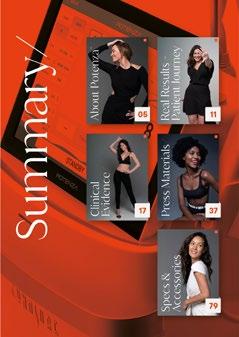

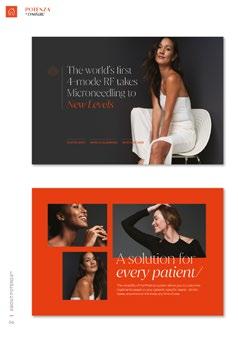
With one click for example, you can go to the desired REAL RESULTS: Patient Journey
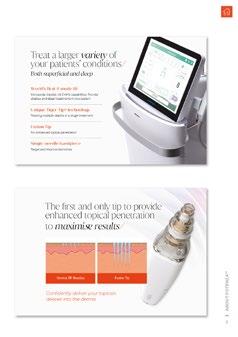
From any page you can back to the table of contents
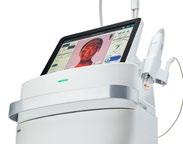
Summary /
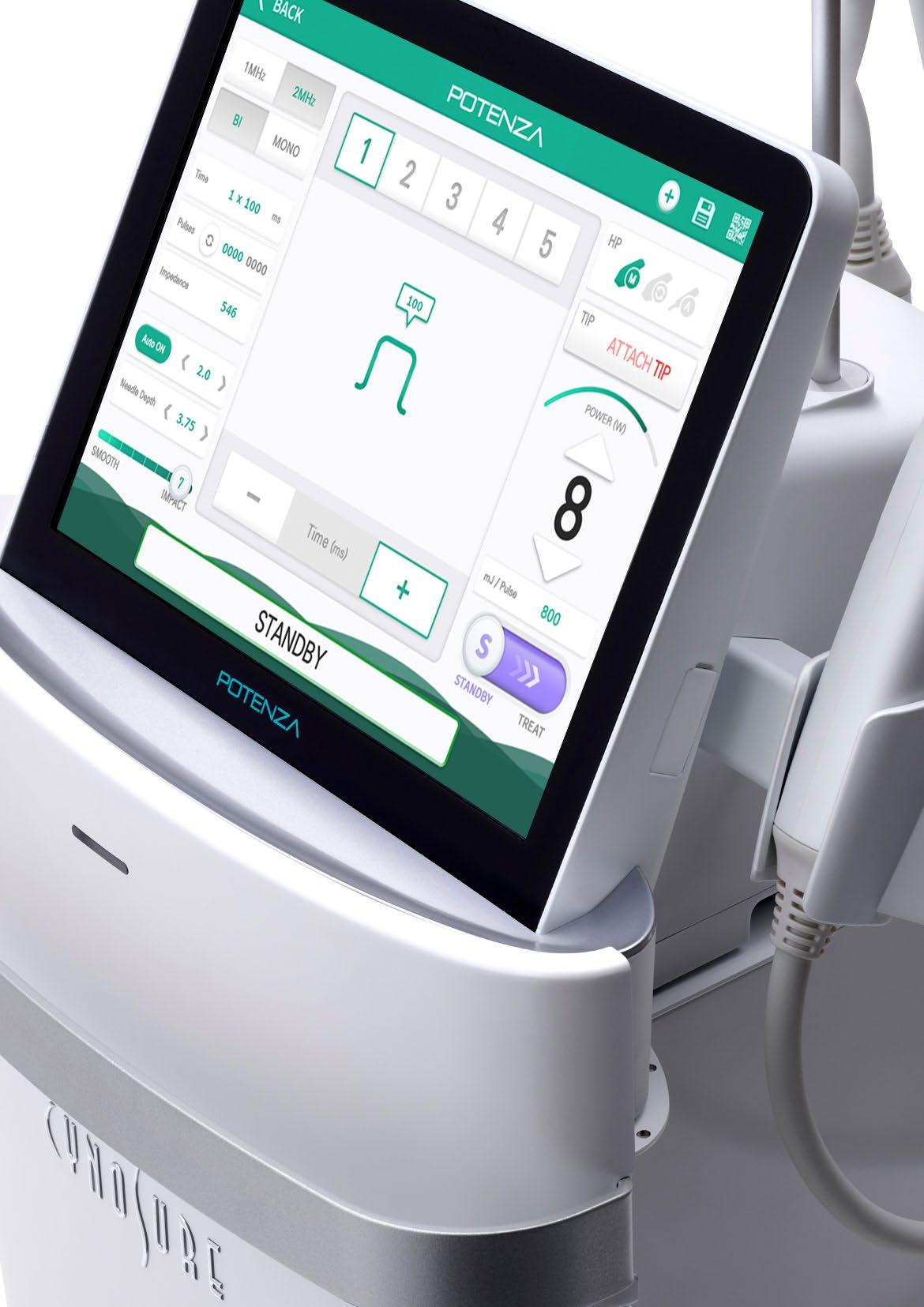
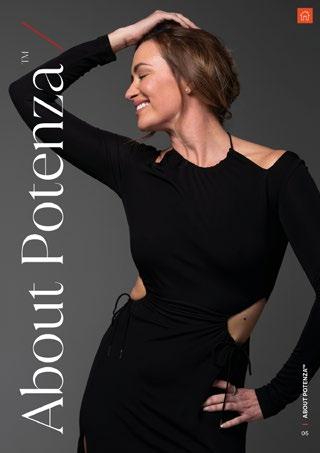


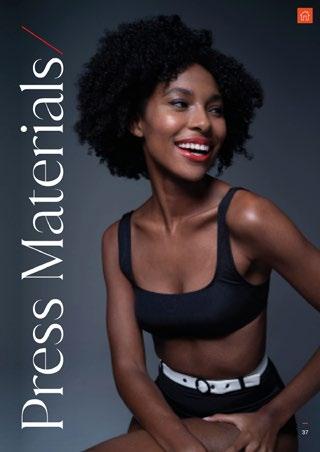

About Cynosure®/
We are leaders, innovators, developers, and best-in-class creators of energybased aesthetic and medical treatment systems. Cynosure develops and manufactures a diverse range of leading treatment applications for hair removal, skin revitalisation, scar reduction, gynecological health, body contouring, and more. Our innovative products are used worldwide by practitioners, physicians, and aesthetic business owners to help enhance their offerings while providing the latest treatments to patients.

About Potenza
Unlike Any Other/
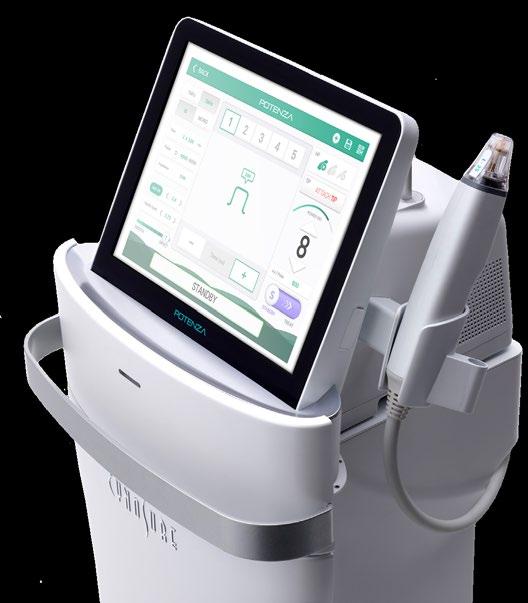

4-mode RF takes Microneedling to New Levels

TIGHTEN SKIN* IMPROVE BLEMISHES REVITALISE SKIN



A solution for every patient/
The versatility of the Potenza system allows you to customise treatments based on your patients’ specific needs – all skin types, anywhere on the body, any time of year.
Treat a larger variety your patients’ conditions
Both superficial and deep
World’s first 4-mode RF
Monopolar, bipolar, 1 & 2 MHz capabilities. Provide shallow and deep treatments in one system.
Unique Tiger TipTM technology
Treating multiple depths in a single treatment
Fusion Tip
For enhanced topical penetration
Single-needle handpiece
Target and improve blemishes
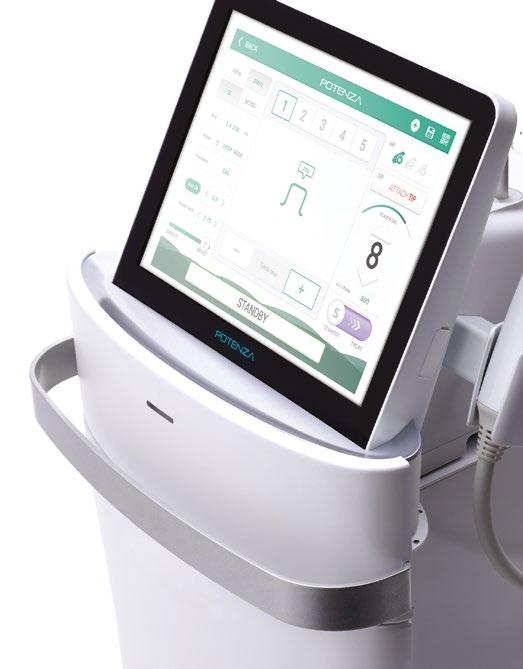
The first and only enhanced topical penet to maximise results
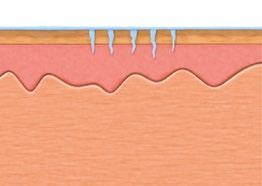
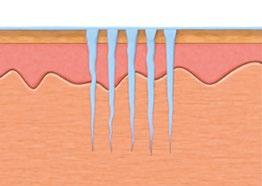
Confidently deliver your topicals deeper into the dermis

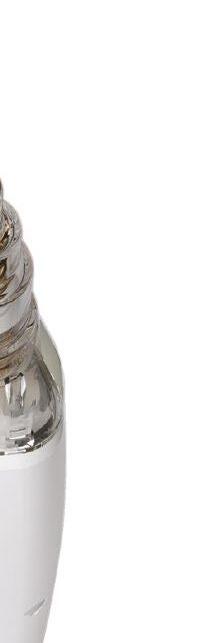
21 insulated needle array
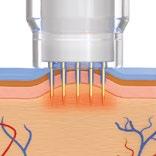
Uses a dual-air chamber design to capture and release air towards the skin in order to enhance topicals into the channels
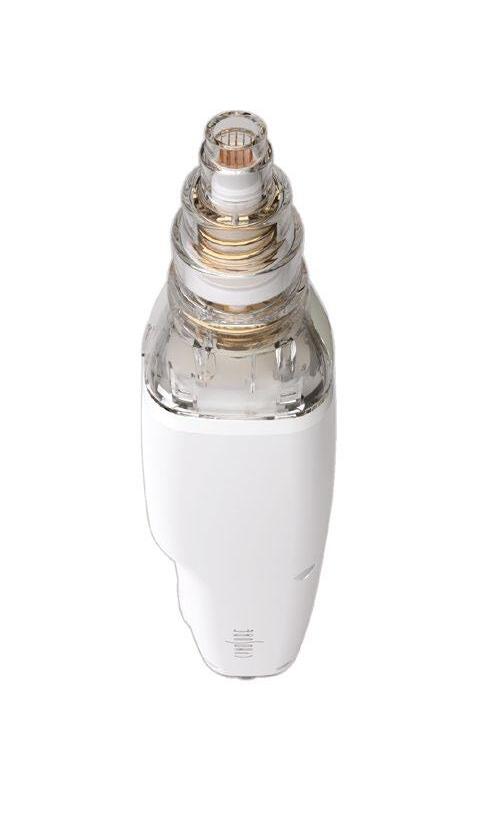
Semi-Insulated Needles
16, 25 and 49 needle array
Adjustable depth
0.5mm- 4.0mm
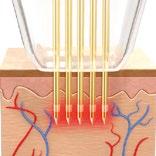
Used for treating more tissue in a single treatment without sacrificing the epidermis
16, 25 and 49 needle array
Adjustable depth
0.5mm- 4.0mm
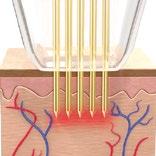
Used for both targeted and deep treatments in the skin
needles
0.8mm, 1.2mm and 1.5mm depth
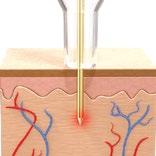
Used to precisely target and improve blemishes found in the skin
Fusion Tip
Normal RF Needles

Real ResultsPatient Journey /
Real Results: Patient Journey/
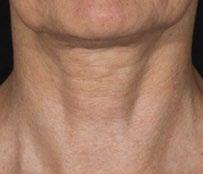

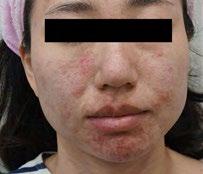
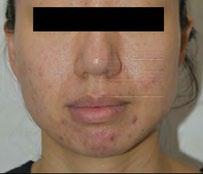
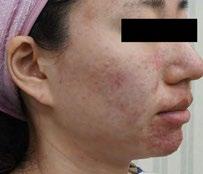
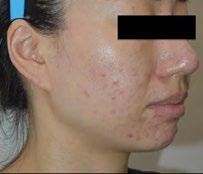
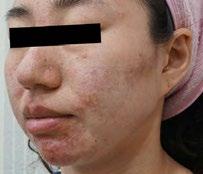
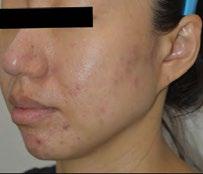
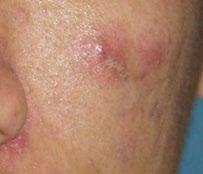
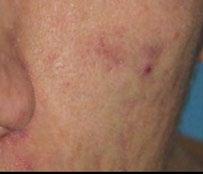
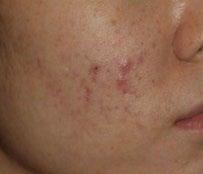
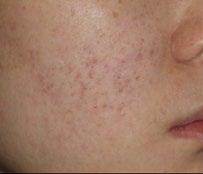
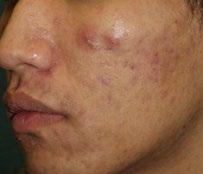
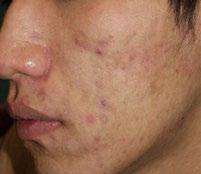
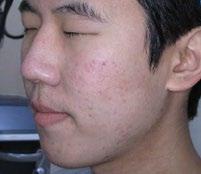
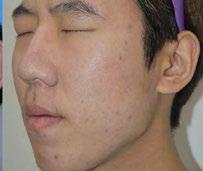
Courtesy of S. Doherty, MD
Courtesy of J. H. Yoon, MD., Korea. Yonseifams clinic
Courtesy of Jeisys
Courtesy of Jeisys
Courtesy of J. H. Yoon, MD., Korea. Yonseifams clinic
Courtesy of J. H. Yoon, MD., Korea. Yonseifams clinic
Courtesy of Jeisys
Courtesy of J. H. Yoon, MD., Korea. Yonseifams clinic
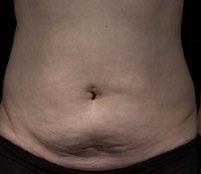
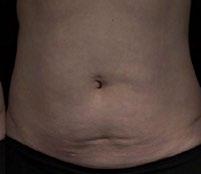
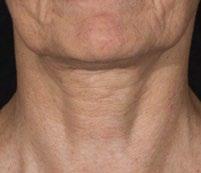
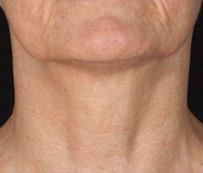
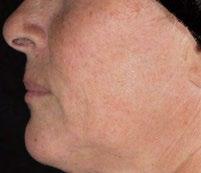
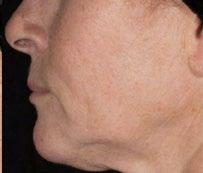
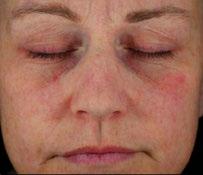
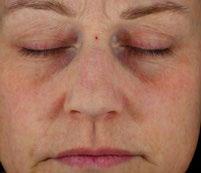
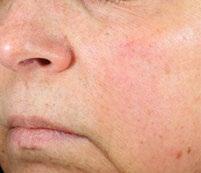

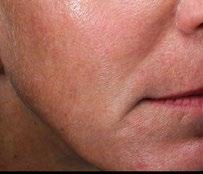
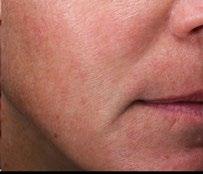
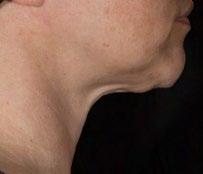

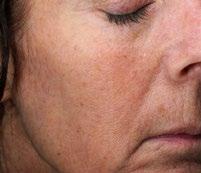
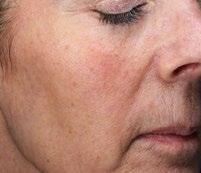
Courtesy of S. Doherty, MD
Courtesy of S. Doherty, MD
Courtesy of S. Doherty, MD
Courtesy of S. Doherty, MD
Courtesy of S. Doherty, MD
Courtesy of R. Weiss, MD
Courtesy of R. Weiss, MD
Courtesy of S. Doherty, MD
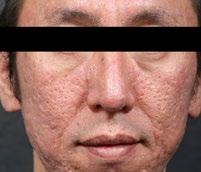
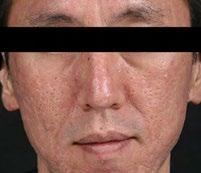

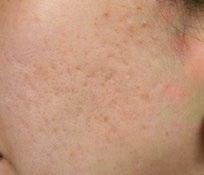
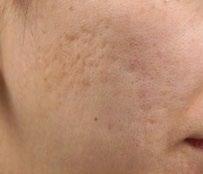
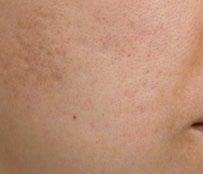
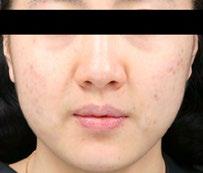
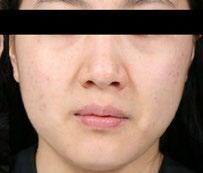
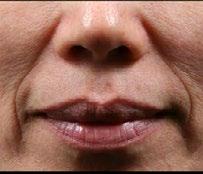
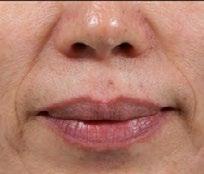
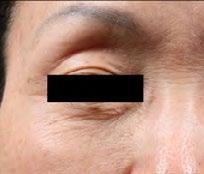
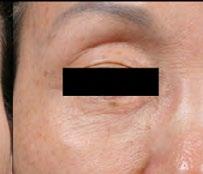
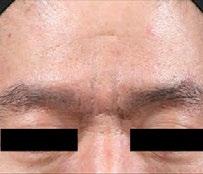
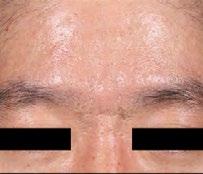
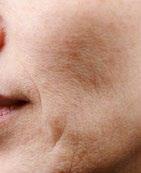
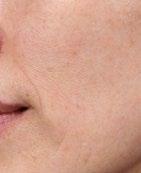
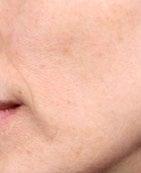
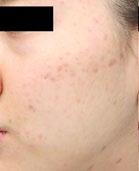
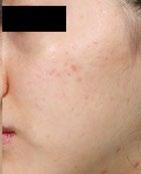
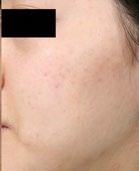
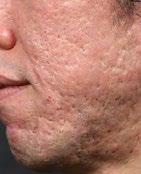
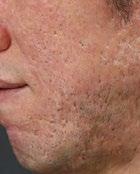
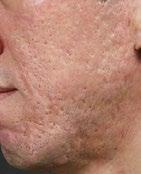
Courtesy of T. Takahashi, MD
Courtesy of T. Takahashi, MD
Courtesy of T. Takahashi, MD
Courtesy of T. Takahashi, MD
Courtesy of T. Takahashi, MD
Courtesy of T. Takahashi, MD
Courtesy of T. Takahashi, MD
Courtesy of T. Takahashi, MD
Courtesy of T. Takahashi, MD
Courtesy of T. Takahashi, MD
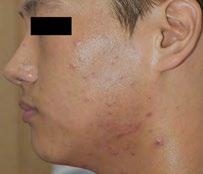
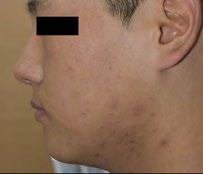
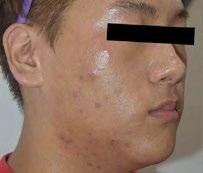
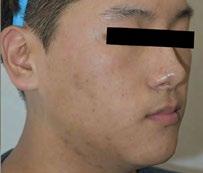
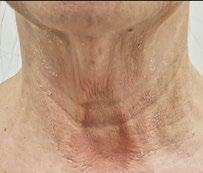
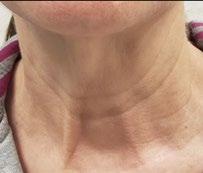
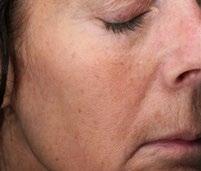
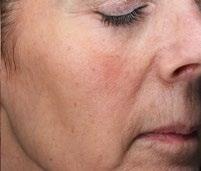
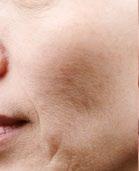
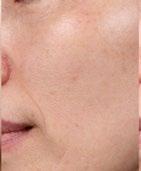
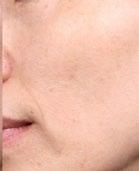
Before, 60 days after 1 treatment, and 67 days after 2 treatments
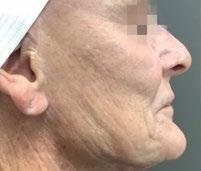
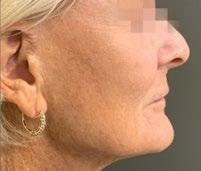
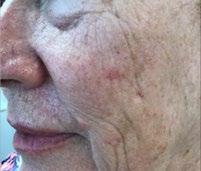
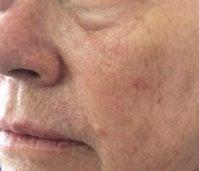
Courtesy of University Park Dermatology & Medical Spa
Courtesy of Skin Surgery Medical Group
Courtesy of J. H. Yoon, MD., Korea. Yonseifams clinic
Courtesy of J. H. Yoon, MD., Korea. Yonseifams clinic
After 3 treatments
Courtesy of Renee Desrosiers
Courtesy of R. Weiss, MD
Courtesy of T. Takahashi, MD

Clinical Materials /
Literature
review of treatments and parameters for implementation of 9-tip radiofrequency microneeding device
Dianne Quibell, MD
Background
• Radiofrequency (RF) microneedling is a popular technique to treat dermal tissue without significantly damaging the epidermis.
• This study is a review of the available literature comparing the capabilities of RF microneedling devices to a new device with 9 different tips.
Method
• A Pubmed and RightFind search was conducted using the key words “radiofrequency”, “RF”, and “microneedle”. Results were further condensed using the key words “multi-needle” and “FDA cleared”.
• Parameters were compiled and compared to one another to better understand the range of treatment options and settings available for use in the US market.
Results
• 32 articles discussing five FDA cleared devices resulted from the search which included parameters and device applications (Table 1).
Table 1. Summary of parameters found in peer reviewed literature
Depths
Power
0.5mm-3.5mm
0-70W
Exposure Time (Pulse Width) 20ms-1,000ms
Frequency 1MHz and 2Mhz
RF Delivery System Monopolar and Bipolar
• Common clinical conditions for these devices included improvement of blemishes, skin tightening (via soft-tissue coagulation) and skin revitalization.
• Devices had either insulated or non-insulated needles which affect the delivery of the RF energy.
• Treatment depths vary from 0.5mm to 3.5mm and exposure times range from 20ms to 1,000ms.
• All devices were able to deliver energy as low as 0W and as high as 70W. Higher energies are required to coagulate tissue which is integral for most indications.
• Available devices had either monopolar or bipolar delivery systems, which can affect how the energy and subsequent heat is delivered to the tissue.
• Based on the research, it is determined that a new device that offers a wide range of parameters and characteristics is necessary to treat all desired indications (Table 3).
Note. NR = none reported
Table 3. Characteristics of a new device to treat all desired indications
Conclusion
• The literature concluded needle type, treatment depth, treatment density, monopolar versus bipolar energy delivery, total energy per pin and power are important when creating a customized treatment with RF microneedling.
• While RF microneedling is being used for a wide array of conditions, the exact parameters to treat each indication are just as wide. Further research is needed to define precise treatment parameters and protocols that will yield the optimal results while mitigating adverse events.
©2020. Cynosure, LLC. All rights reserved. Cynosure is a registered trademark of Cynosure, LLC. Tiger Tip is a trademark of Cynosure, LLC. Potenza is a trademark of Jeisys Medical, Inc. Cynosure, LLC. owns exclusive rights to photography. Use of photography without written permission of Cynosure is prohibited. PRD_3508
The Potenza radiofrequency microneedling device is intended for electrocoagulation and hemostasis of soft tissue for dermatologic conditions. Potential side effects include temporary redness, temporary tingling, and burning sensation while receiving treatment. Like all medical procedures, not all patients are suitable for the treatment. A qualified practitioner is solely responsible for evaluating each subject’s suitability to undergo treatment and for informing those being treated about any risks involved with the treatment, pre-and postoperative care, and any other relevant information. Individual results may vary and are not guaranteed. 921-7043-046
Table 2. Summary of device characteristics found in peer reviewed literature
A Comparison of Facial Revitalization Experience with Novel
PotenzaTM Radiofrequency Microneedling Customization: Bipolar vs. Monopolar Mode

Dr. Robert D. Murgia III, DO, FAAD
Dr. Robert D. Murgia III, DO, FAAD actively participate in a multitude of clinical studies, authors numerous peer- reviewed journal publications in both medical and cosmetic dermatology, and presents at conferences both nationally and internationally. He is a fellowship-trained cosmetic dermatologic surgeon and board-certified dermatologist, who practices adult and pediatric dermatology. Following medical school, he received multiple prestigious advanced clinical trainings, to include an American Society for Dermatologic Surgery Cosmetic Dermatologic Surgery Fellowship at Maryland Dermatology, Laser, Skin, and Vein under the mentorship of Robert Weiss, MD, a world-renowned leader in the field. During his fellowship, he received advanced training in laser and energy-based devices for skin rejuvenation, non-invasive body contouring, and varicose vein treatments.
An introduction to key industry needs
The 2019 annual survey conducted by the American Society of Dermatologic Surgery revealed that upwards of 70% of surveyed participants considered a cosmetic procedure;1 this represents a remarkable increasing trend, up from 2015 when only 50% of patients expressed interest in cosmetic procedures. Fueled by a general desire to avoid traditional surgical procedures, radiofrequency (RF) technology continues to see a rapid expansion of indications (due to growing demand for non-invasive techniques with little to no downtime).3 As further evidence, nearly 16 million of the approximate 17.7 million total cosmetic procedures performed in the United States in 2018 represented minimallyinvasive cosmetic procedures.4 According to the 2018 annual survey conducted by the American Society of Dermatologic Surgery Skin, tightening and wrinkle smoothing treatments, using non-invasive techniques such as ultrasound, laser, light, or radiofrequency, represented nearly 60% of cosmetic procedures in 2018.3
Collectively, research supports the continued use of innovative non-invasive cosmetic devices to address industry and patient needs.1-13 The development of microneedle arrays for targeted delivery of energy, to precise depths of skin, limits injury to surrounding tissue, and also improves the ability to address many common aesthetic concerns.5-13 The mechanisms behind improved skin remodeling include induction of cytokines and growth factors (that stimulate collagen and elastin).5-10
Innovation in radiofrequency microneedling technology with PotenzaTM
As a leader in the next generation of fractional RF microneedling devices, PotenzaTM (Cynosure, LLC, Westford, MA) represents a unique advancement in RF technology. As the world’s first RF microneedling system that combines monopolar and bipolar RF at 1 or 2 MHz frequencies, this 4-mode device permits both superficial and deeper treatments in 1 system.11-13
Partnering with the body’s natural healing processes, the technology is designed to stimulate collagen and elastin.5 With the ability to deliver energy/heat deep into the dermis, the resulting micro-injury also enhances skin-tightening (through soft-tissue coagulation).5 It is indicated for use in dermatological and general surgical procedures for electrocoagulation and hemostasis. The only technology to offer
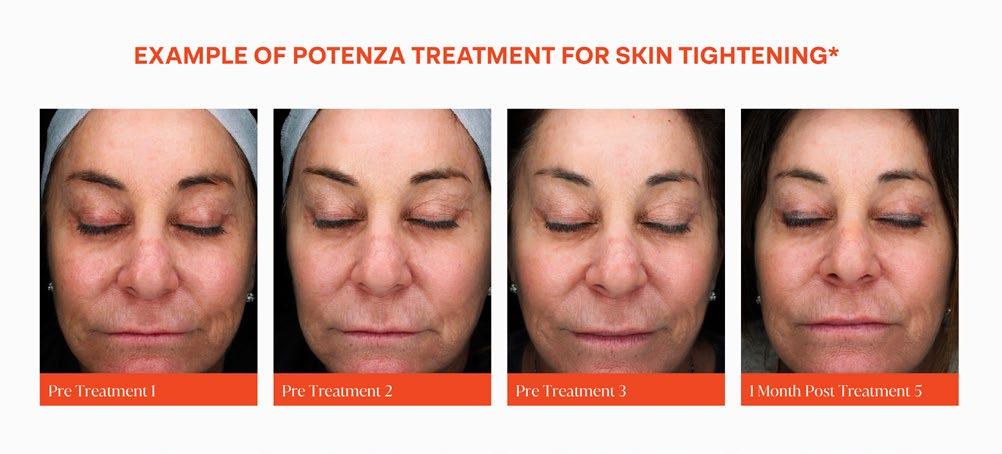
these multiple options, Potenza provides customizable treatments with either bipolar RF or monopolar RF that can be delivered at 1 MHz or 2 MHz frequencies.
In addition, the Potenza device offers customizable handpieces and tips to best fit specific conditions. The device’s two handpieces accommodate multi-needle or single-needle tips. Nine different types of tips provide a high level of precision, tailored to patients’ unique needs. Innovations include the semi-insulated tips, insulated tips, the new uniquely insulated Tiger TipTM technology, and single-unit tips with multiple depths. Options for multi-needle arrays include densities of 16, 25, and 49 (available in insulated or semi-insulated varieties), to deliver energy to precise areas.
Comparing the unique potential of radiofrequency modes
The Potenza customizable RF modes expand the energy delivery options in a convenient and easyto-use interface. The bipolar mode is a more superficial delivery of energy, as the RF passes from positive (+) pole to negative (-) pole on the needle tips.5, 11-13 During this process, heat-delivery is more concentrated in the target area and can be uncomfortable when used in the upper dermis of the facial tissue (but deliver desired results, see study below). Therefore, bipolar mode is characterized as accurate targeting that is ideal for the mid-dermis to deep- dermis; it is suitable for skin tightening through soft-tissue coagulation mechanisms.5-6,11-13
In contrast, the monopolar mode allows energy to travel from the source (tip) to a grounding NEM pad to create a deeper, wider, treatment area (from a more diffuse pattern of heat distribution).5-6,11-13 This mode is versatile, targeting the superficial to deep-dermis for revitalization and skin tightening (through soft-tissue coagulation and denaturation) with shorter downtime and less pain.11-13
Examining the multi-mode actions in patient experience
In a study to compare the efficacy and overall patient experience between monopolar and bipolar modes using the novel four-mode RF microneedling device Potenza, a total of 5 participants were treated with both monopolar and bipolar settings using a full split-faced approach. Using standardized conditions and digital clinical photography, participant images were taken at baseline and multiple post-treatment increments (immediately, 15 minutes, 30 minutes, and 24 hours post- treatment).
Irrespective of energy mode (monopolar versus bipolar), settings and treatments were consistent for both treatment sides. Topical anesthetic was applied to treatment areas prior to each procedure.
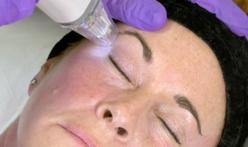
Using an insulated 25 needle tip at a depth of 2mm and impact factor of 5/7, an 800 mJ/pulse was delivered over a pulse duration of 40 ms with 20 W of power.
Treatments were well tolerated by all participants, with minimal downtime. Participants were asked to report their pain score (0-10) for each side of their facial treatment, and reported a median pain score of just 3/10 and 4/10 (for monopolar and bipolar modes respectively).
Following each treatment, participants also reported on their adverse event profile. Participants reported that the bipolar treated side felt more swollen, red and sensitive compared to the monopolar treated side. Side-effects subsided quickly. Monopolar treatments were preferred by the majority of participants. However, patients reported healthier, smoother, firmer (through soft tissue coagulation), and more youthful looking skin with improved texture with both modalities.
Clinician and patient experience
Delivery of either monopolar or bipolar energy, using the novel four-mode RF microneedling device Potenza provides effective treatment for facial revitalization and customization of patient experience. Although participants in this study preferred monopolar treatments, both methods were welltolerated. The innovative, multi-functional device Potenza addresses individual patient needs through highly customizable technology, where single-modality devices are less versatile.
References
1. American Society for Dermatologic Surgery. 2019 ASDS Consumer Survey on Cosmetic Dermatologic Procedures. https:// www.asds.net/medical-professionals/practice-resources/asds-consumer-survey-on-cosmetic-dermatologic-procedures. Published July 21, 2019. Accessed April 1, 2021
2. American Society for Dermatologic Surgery. 2015 ASDS Consumer Survey on Cosmetic Dermatologic Procedures. https:// www.asds.net/Portals/0/PDF/consumer- survey-2015-infographic.pdf. Published 2015. Accessed April 1, 2021.
3. American Society for Dermatologic Surgery. 2018 ASDS Consumer Survey on Cosmetic Dermatologic Procedures. https:// www.asds.net/Portals/0/PDF/consumer- survey-2018-infographic.pdf. Published 2018. Accessed April 1, 2021
4. ASPS. 2018 National Plastic Surgery Statistics. Plasticsurgery.org. https://www.plasticsurgery.org/documents/News/ Statistics/2018/plastic-surgery-statistics- report-2018.pdf. Published 2019. Accessed April 1, 2021.
5. Weiner SF. Radiofrequency Microneedling: Overview of Technology, Advantages, Differences in Devices, Studies, and Indications. Facial Plast Surg Clin North Am. 2019 Aug;27(3):291-303. doi: 10.1016/j.fsc.2019.03.002. Epub 2019 May 22. PMID: 31280844.
6. Alessa D, Bloom JD. Microneedling Options for Skin Rejuvenation, Including Non-temperature-controlled Fractional Microneedle Radiofrequency Treatments. Facial Plast Surg Clin North Am. 2020 Feb;28(1):1-7. doi: 10.1016/j.fsc.2019.09.001. PMID: 31779933.
7. Shin JW, Park JT, Chae JB, et al. The efficacy of micro-insulated needle radiofrequency system for the treatment of lower eyelid fat bulging. J Dtsch Dermatol. 2018. DOI: 10.1111/ddg.13736.
8. Kim ST, Lee KH, Sim HJ, Suh KS, Jang MS. Treatment of acne vulgaris with fractional radiofrequency microneedling. J Dermatol. 2014 Jul;41(7):586-91. doi: 10.1111/1346- 8138.12471. Epub 2014 May 8. PMID: 24807263.
9. Min S, Park SY, Yoon JY, Suh DH. Comparison of fractional microneedling radiofrequency and bipolar radiofrequency on acne and acne scar and investigation of mechanism: comparative randomized controlled clinical trial. Arch Dermatol Res. 2015;307(10):897-904. doi:10.1007/s00403-015-1601-z
10. Clementoni MT, Munavalli GS. Fractional high intensity focused radiofrequency in the treatment of mild to Moderate laxity of the lower face and neck: A pilot study. Lasers Surg Med. 2016;48(5):461-470. doi:10.1002/lsm.22499
11. Perez-Rivera F. Pilot study for permanent resolution of axillary hyperhidrosis: elimination of sweat glands with intradermal microneedle radiofrequency. European Journal of Plastic Surgery. 2019;42(2):161-168. doi:10.1007/s00238-018-1470-8
12. Jeon H, Geronemus RG. Successful Noninvasive Treatment of Festoons. Plast Reconstr Surg. 2018;141(6):977e-978e. doi:10.1097/PRS.0000000000004400
13. Zheng Z, Goo B, Kim DY, Kang JS, Cho SB. Histometric analysis of skin-radiofrequency interaction using a fractionated microneedle delivery system. Dermatol Surg. 2014;40(2):134-141. doi:10.1111/dsu.12411
* Through soft tissue coagulation.
©2021 Cynosure, LLC. All rights reserved. Cynosure is a trademark and/or a registered trademark of Cynosure, LLC. Potenza is a trademark of Jeisys Medical, Inc. Cynosure, LLC owns exclusive rights to photography. Use of photography without written permission of Cynosure is prohibited.
The Potenza radiofrequency microneedling device is intended for use in dermatologic and electronic surgical procedures for electrocoagulation. Health Canada indicated for the treatment of acne vulgaris. Potential side effects include temporary redness, temporary tingling, and burning sensation while receiving treatment. Like all medical procedures, not all patients are suitable for the treatment. A qualified practitioner is solely responsible for evaluating each subject’s suitability to undergo treatment and for informing those being treated about any risks involved with the treatment, pre-and postoperative care, and any other relevant information. Individual results may vary and are not guaranteed.
Advanced 3D Photographic Analysis of Radiofrequency Microneedling Treatments on the Face
Dianne Quibell, MD
Background
• Radiofrequency (RF) and microneedling treatments are popular modalities for various indications. Recently devices have begun to use a combination of microneedles with RF energy to allow RF to penetrate the skin and increase treatment efficacy.
• This study utilizes an advanced photography analysis method by building 3D models of the face to assess the efficacy of RF microneedling treatments for a variety of facial indications, including facial rejuvenation and wrinkles.
Methods
• 32 subjects received treatment with the RF microneedling device for facial revitilization, for facial revitalization, jawline and abdominal laxity, signs of advanced aging and blemishes.
- A subset of subjects had their faces scanned with a camera system which built a 3D model of the face to be analyzed.
• Subjects received up to 5 treatments and returned for 1 and 3 month follow up visits.
• Photographic review with the camera system and subject satisfaction were evaluated.
Results
• Due to the COVID-19 pandemic, only 12 subjects returned for their follow up visits, while the remaining had analysis done for their most recent time points. Nearly half of the subjects who returned for their final follow up were delayed up to 6 months.
• 100% of the subjects who returned for follow-up and completed a satisfaction survey responded that they were either extremely satisfied, satisfied, or slightly satisfied
• Photographic review showed up to 15.9% improvement in wrinkles (Figure 1 and 2) and 15.1% improvement in skin with significant improvement also seen in facial redness and general revitilization.

Figure 1. Reduction in total area and average depth of forehead wrinkles.
Figure 2. Overview of wrinkle analysis performed by 3D system.
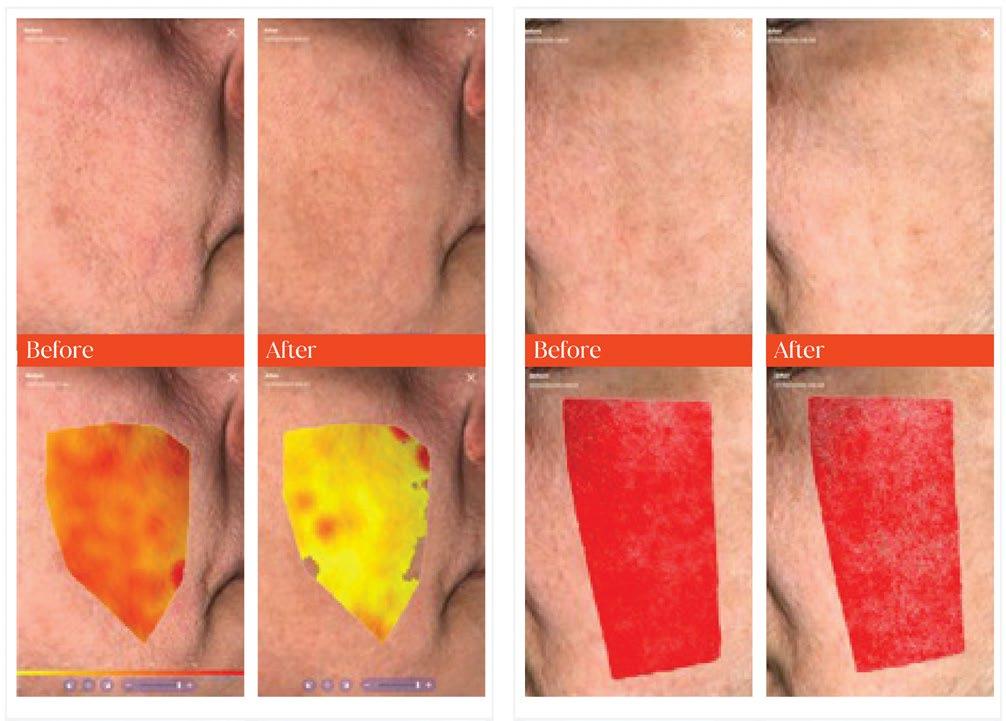
Conclusion
• Use of the radiofrequency microneedling device showed significant improvement in a variety of indications, including facial wrinkles, redness, and general revitilization. These findings were successfully quantified by analysis of 3D facial models.
©2021. Cynosure, LLC. All rights reserved. Cynosure is a registered trademark of Cynosure, LLC. Potenza is a trademark of Jeisys Medical, Inc. The Potenza radiofrequency microneedling device is intended for electrocoagulation and hemostasis of soft tissue for dermatologic conditions. Potential side effects include temporary redness, temporary tingling, and burning sensation while receiving treatment. Like all medical procedures, not all patients are suitable for the treatment. A qualified practitioner is solely responsible for evaluating each subject’s suitability to undergo treatment and for informing those being treated about any risks involved with the treatment, pre-and postoperative care, and any other relevant information. Individual results may vary and are not guaranteed. PRD-4614
Figure 3. Overview of Skin Roughness measurements performed on Female subject; Fitzpatrick Skin Type III.
Figure 4. Overview of Redness measurements performed on Female subject; Fitzpatrick Skin Type II.
Natural Enhancement Using the Innovative Multifunctional PotenzaTM Radiofrequency Microneedling Device
A Case Study for a Minimally-Invasive Skin Tightening Treatment
Introduction
• A sixty year-old woman with a medium skin type (prone to sunburn but turns to tan, Fitzpatrick Skin Type III)1 presented with sagging skin, sun-damage and wrinkles.
Discussion
• The ability to address many common beauty (aesthetic) concerns has improved with the development of a precision technology called
• microneedle arrays. By directing energy to very precise depths of skin, the recovery time for microneedle arrays is considerably less than the recovery time associated with surgical aesthetic procedures. Our patient desired improvement of skin tightening in the lower face area.
Treatment with PotenzaTM RF microneedling system
• First, the face was cleansed with a gentle, non-toxic skin cleanser called hypochlorous acid (Lasercyn®) to remove debris. Next, a pain-relieving cream was applied to the treatment area 30 minutes prior to treatment (then removed with a 4 cm x 4 cm gauze pad). Next, the entire face was completely cleansed again with a gentle cleanser. To keep the energy flowing for deeper results, a NEM (neutral electrode monitoring) pad was connected to the patient’s upper back. To determine if the patient was a good candidate (with tolerance), test spots were performed prior to the treatment.
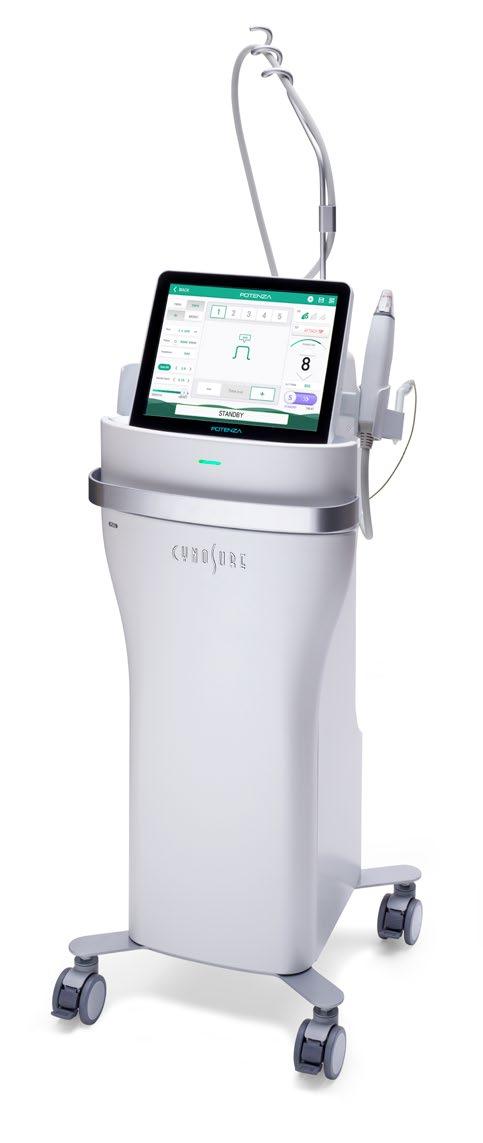
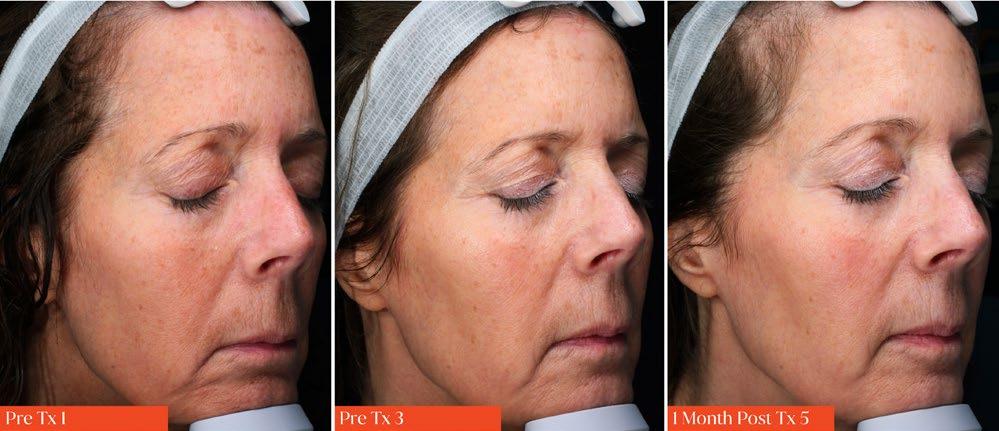
• Two rounds (called passes) were made on the regions of the mid- to lower-face, to include the cheek/jawline, around the mouth, and neck, using the S-49 needle (49 semiinsulated microneedles to deliver a monopolar RF [radiofrequency] energy):
Pass 1: Cheeks and jawline were treated at a skin depth of 2 mm, using 10 W power and a 150 ms pulse width. The mouth area was then treated at a depth of 1.75 mm (at 10 W and 150 ms). The neck was treated at an initial depth of 1.5 mm (at 10 W and 150 ms). This pass was performed in a horizontal direction with 25% overlap of each pulse (for consistent coverage).
Pass 2: Cheeks and jawline were treated at a skin depth of 1.75 mm, using 12 W power and 150 ms pulse width. The area around the mouth was then treated at a depth of 1.5 mm (at 11 W and 150 ms). The neck was treated at a depth of 1.25 mm (at 11 W and 150 ms).To ensure full coverage of the treatment area, this pass was performed in a vertical direction with 25% overlap of each pulse. Following treatment, the area was cleansed with warm water and a mild cleanser. The expected side effects following treatment all resolved within 24 hours (including redness, swelling and pinpoint bleeding). The patient was advised to avoid heavy aerobic exercise or activities that may increase body temperature for the next 24 hours. Daily use of SPF ≥ 30 sunblock was recommended, as well as avoidance of direct sunlight (ultraviolet rays).
Conclusion
• Potenza treatment was successful and well-tolerated by this patient. Skin tightening* and overall enhanced complexion were observed through the mid- to lower face and jawline.
References
1. 1. Fitzpatrick TB. The validity and practicality of sun-reactive skin types I through VI. Arch Dermatol. 1988;124(6):869-71.
* Through soft tissue coagulation
©2021. Cynosure, LLC. All rights reserved. Cynosure is a registered trademark of Cynosure, LLC. Use of photography without written permission of Cynosure is prohibited. Potenza is a trademark of Jeisys Medical, Inc. The Potenza radiofrequency microneedling device is intended for electrocoagulation and hemostasis of soft tissues for dermatologic conditions. Common side effects include redness, heat sensation and tingling while receiving treatment. Other side effects may include swelling, blistering, burns, hives and lightening and darkening of the skin. Other side effects may occur, including some we may not know about yet. Like all medical procedures, not all patients are suitable for the treatment. Talk to your medical provider about the risks and benefits of this procedure. A qualified practitioner is solely responsible for evaluating each subject’s suitability to undergo treatment and for informing those being treated about any risks involved with the treatment, pre-and postoperative care, and any other relevant information. Individual results may vary and are not guaranteed PRD-4837
UV and Cross Polarized Image Evaluation of a Novel Bipolar and Monopolar Radiofrequency Microneedling Device for Skin Texture
Robert Murgia, DO, Robert Weiss, MD
Background
• Delivery of radiofrequency (RF) energy through micro-needle arrays allows treatment targeted to specific depths without excess damage to surrounding tissue.
• This study evaluates the use of a novel RF bipolar and monopolar microneedling device for skin textural improvement.
Methods
• 25 subjects were enrolled for showing advanced signs of aging and scarring and received up to 5 treatments at 3-4 week intervals with a RF microneedle device with monopolar and bipolar settings. Subjects returned for 1 and 3 month follow up visits.
• Photographic evaluation, including cross polarized and UV imaging, at baseline and follow up were analyzed for texture, wrinkles, blemishes and pores as well as global improvement. Subject and physician questionnaires and adverse events were assessed.
Results
• 19 of the 25 subjects returned for their final follow-up, which was delayed up to 4 months due to the COVID-19 pandemic.
• The majority (89%) of subjects rated that they were satisfied with their treatment results (Figure 1).
• Physician rating of global outcome indicated 89% of subjects showed some textural improvement.
• Blinded evaluators were able to correctly identify the post- treatment image with 90% accuracy.
• Multi-spectral imaging digital analysis showed measurable reduction of visible wrinkles, blemish spots and pores in 84% of subjects.
• No unexpected adverse events were recorded. Transient erythema was recorded for up to 24 hours.


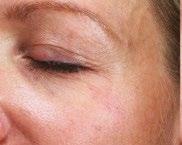
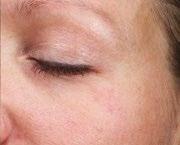
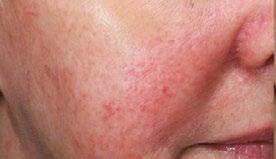
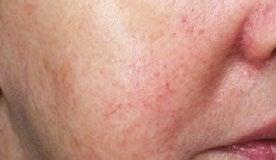
Conclusion
• Physician and subject assessment, digital analysis and blinded evaluation support the efficacy of a novel RF bipolar and monopolar microneedle device for improvement of skin texture. Treatment was associated with a high level of patient satisfaction and was well tolerated in all subjects.
*Through soft tissue coagulation.
©2021 Cynosure, LLC. All rights reserved. Cynosure is a trademark and/or a registered trademark of Cynosure, LLC. Potenza is a trademark of Jeisys Medical, Inc. Cynosure, LLC owns exclusive rights to photography. Use of photography without written permission of Cynosure is prohibited. The Potenza radiofrequency microneedling device is intended for use in dermatologic and electronic surgical procedures for electrocoagulation. Health Canada indicated for the treatment of acne vulgaris. Common side effects include redness, heat sensation and tingling while receiving treatment. Other side effects may include swelling, blistering, burns, hives and lightening and darkening of the skin. Other side effects may occur, including some we may not know about yet. Like all medical procedures, not all patients are suitable for the treatment. Talk to your medical provider about the risks and benefits of this procedure. A qualified practitioner is solely responsible for evaluating each subject’s suitability to undergo treatment and for informing those being treated about any risks involved with the treatment, pre-and postoperative care, and any other relevant information. Individual results may vary and are not guaranteed. PRD_4615_CAN-EN
Baseline
Baseline
Baseline
The Potenza Fusion Tip: Enhanced penetration of topical products
Dr Christine Dierickx
Skinperium Clinic, Luxembourg

Dr Christine Dierickx is a Board-Certified Dermatologist, graduating from the Catholic University of Leuven, Belgium, and has completed fellowships in Phlebology, laser surgery and Mohs surgery as well as instructor at the Wellmann Laboratories of Photomedicine in Boston, Massachusetts.
From 1999 until 2016 she was Director of Skinperium Clinic in Boom, Belgium before relocating with her family and private medical dermatology practice to Luxembourg. Here she continues to specialize in aesthetic dermatology and laser surgery and remains actively involved in research in various energy-based devices and their applications. She is widely published and lectures internationally in the field of laser surgery, energy-based devices, and photodynamic therapy.
She is a past Vice-President of the American Society of laser Medicine and Surgery, member of the American Academy of Dermatology and honorary member of the British Medical Laser Association and the European Society for Lasers and Energy Based Devices.
Radio frequency microneedling
The recent launch of the advanced Potenza radiofrequency microneedling device (Cynosure, LLC Westford, MA) has brought new levels of versatility to a market where 70% of consumers are considering undergoing non-invasive treatments1 and 1,200,000 microneedling treatments were performed in 20182.
The Potenza device offers treatment options of four modes of radiofrequency; monopolar and bi-polar and 1MHz and 2MHz, and a wide selection of treatment tips that the physician can use to optimize and individualize treatment for every patient. Every patient has a unique requirement of therapy to address their skin health so versatility with a device is important. Radiofrequency microneedling also offers some different opportunities for patients that might not be completely suitable for light-based revitalization treatments due to their skin color or who want to continue treatments during the summer months when this type of treatment is more difficult to perform without risking causing post inflammatory hyper-pigmentation.
The Potenza has a broad range of ten different treatment needle tips to further customize the treatment delivery, single insulated needles to precisely target and improve blemishes on the skin, insulated needles, and the proprietary Tiger TipTM semi-insulated needle tips, available with 16,25 and 49 needle densities, which allow the treatment of more tissue in a single treatment without sacrificing the epidermis.
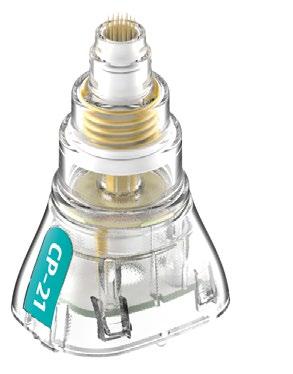
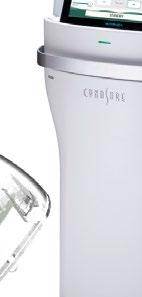
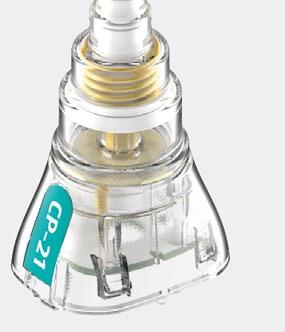
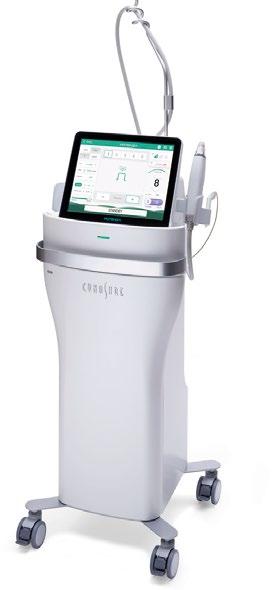
The
exclusive fusion tip for enhanced penetration of topicals
The latest tip to join the Potenza portfolio is the Fusion Tip, which is exclusive to Potenza and brings a triplex of treatment effects to the skin; 1. Mechanical effect by microneedle insertion, 2. Coagulation by Radio Frequency energy, and 3. Enhanced penetration of applied topicals (Image 1).
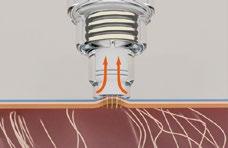

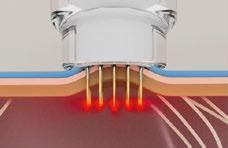

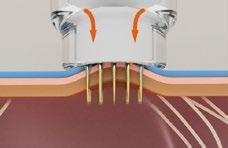

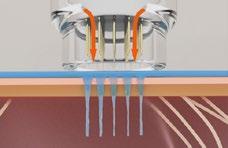

The Fusion Tip uses a dual-air chamber design to capture and release air towards the skin (with each pulse that is applied to the skin) using positive and negative pressure to enhance the penetration of topicals laying on the surface of the skin.
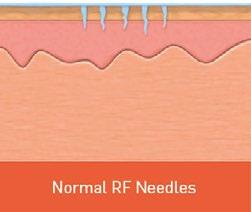

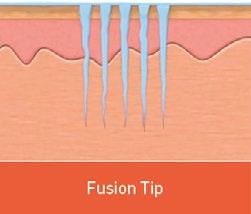

67% More penetration of surface topicals using the fusion tip
To assess the efficacy that the Fusion Tip offers to enhance the penetration of topicals, Cynosure performed a study on ex-vivo porcine skin, directly comparing the amount of black India tattoo ink ingress into the channels made in the tissue when it was treated with the Fusion Tip (CP-21) compared to using the Insulated I-25 Tip. The black India ink provides an easy to visualize representation of the movement of topical products placed on the skin surface prior to treatment with the RF microneedling.
Identical surface areas of porcine skin were treated with the I-25 and the CP-21 tips after application of the black ink to the sample surface. 1MHz Monopolar RF energy with a preset 2mm needle penetration depth and a double pass across the tissue surface for both tips was used. The large samples were then cross sectioned to enable photographic assessment of the ink ingress into the tissue bulk.
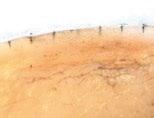


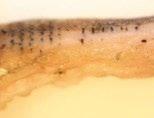


Immediately visible in the cross-section samples is the difference in the shape of the ink staining left in the channels created by the needles. In those creased with the I-25 tip treatment, the ink staining is finer and not as deep into the tissue. Whereas for the treatment with the CP-21 tip, the ink staining has a more conical appearance with heavier staining closest under the epidermis and deeper penetration into the tissue even though the preset tissue depth of needle entry was equal to 2mm for each of the I-25 and CP-21 tips. This larger and deeper ‘saturation’ of ink after treatment with the CP-21 tip is thought to be due to the dual chamber construction of the tip that creates a pressure change that both pushes any topical fluid on the surface of the epidermis into the wound channels created by the needle penetration.
These cross-sectional images were imported into ImageJ, a computer image processing program for optical and computational instrumentation area evaluation, and a basic color filter to help identify the ink that was deposited into the tissue was used. Areas were highlighted red and then changed to a selection of areas for measurement (yellow areas). Each deposit of ink selection area was then refined on a per needle channel basis and measured for overall ink amount. This was completed for all images and then the overall average of ink deposited per needle was determined.
In total, across both sample areas, 102 individual needle channels were assessed using the imaging software (see summary in Table 1). The average amount of ink per needle channel was 67% higher when using the new Fusion Tip CP-21 tip as compared to the existing I-25 tip.
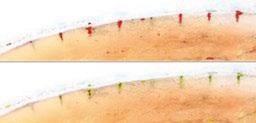

The use of topical ingredients during in-clinic procedures as well as the patient continuing to utilize products at home is an important keystone for improving and maintaining skin health. This would be

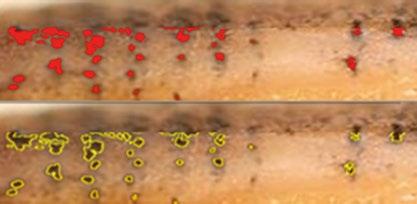


customized to each patient’s skin requirement, in male or female patients, whatever the decade of life they happen to be in.
The testing completed on animal skin has demonstrated an average of 67% increase in penetration of topicals present on the surface of the skin at the time of Potenza RF microneedling treatment with the unique Fusion Tip (CP-21)
due to the exclusive dual chamber design of the CP-21 tip to ‘push the topical product into the channels left behind in the tissue after needle penetration’. The addition of the CP-21 tip to the Potenza portfolio of ten tips gives the physician a comprehensive toolbox to address the bespoke needs of each of their patients in a minimally invasive treatment.
Potenza offers me the ability to completely tailor my patient’s skin treatment experience with the revitalization effects of medical microneedling and the thermal coagulation effects from radiofrequency energy. It has the benefits of both monopolar and bipolar radiofrequency energy delivery and a wide variety of insulated and semi-insulated tips with multiple needle densities as well as single needle option for when I need precise targeting. I have control over needle depth up to 4mm and now with this new Fusion Tip, I can also be confident of maximizing the skin health benefits of the topical additives that I might select for a patient with enhanced delivery into the tissue.
References
1. American Society for Dermatologic Surgery. 2018 Consumer Survey on Cosmetic Dermatologic Procedures. 2018. Accessed June 19, 2019. https://www.asds.net/medical-professionals/practice-resources/asds- consumer-survey-on-cosmeticdermatologic-procedures
2. Estimates based upon Medical Insight RF GAM XVII, EBD & BS&ST syndicated reports (2019) and additional research
The Potenza radiofrequency microneedling device is intended for electrocoagulation and hemostasis of soft tissue for dermatologic conditions. Potential side effects include temporary redness, temporary tingling, and burning sensation while receiving treatment. Like all medical procedures,not all patients are suitable for the treatment. Talk to your medical provider about the risks and benefits of this procedure. A qualified practitioner is solely responsible for evaluating each subject’s suitability to undergo treatment and for informing those being treated about any risks involved with the treatment, pre-and postoperative care, and any other relevant information. Individual results may vary and are not guaranteed.
©2020 Cynosure, LLC. Cynosure and Tiger Tip are registered trademarks of Cynosure, LLC. Potenza is a trademark of Jeisys Medical, Inc. Cynosure, LLC. owns exclusive rights to photography. Use of photography without written permission of Cynosure is prohibited. PRD_4495
Safety and clinical results using a novel radiofrequency microneedling device with 9 different needle array configurations for skin revitalization and tightening (via soft-tissue coagulation)
Robert Murgia, DO; Robert Weiss, MD; Sean Doherty, MD
Background
• Radiofrequency (RF) technology has seen a rapid expansion in indications for nonsurgical skin improvement.
• Delivery of RF energy through a microneedle to enhance energy penetration is a very active area of development.
• This study evaluates the use of a highly customizable RF microneedle device with 9 different needle array configurations for use in various aesthetic applications.
Methods
• 55 subjects underwent 3 treatments with a novel RF microneedle device at 4-week intervals. - Indications for treatment included improvement of blemishes, skin revitalization and skin tightening (via soft-tissue coagulation).
• Energy, needle depth, needle tip impact speed, RF frequency (1Mhz vs. 2Mhz) and polarity (monopolar vs. bipolar modes) were modified at the discretion of the physicians based on their expertise.
• Subject satisfaction, physician evaluation, treatment tolerability, standardized photography and adverse events were assessed.
Results
• Skin tightening (via soft-tissue coagulation) of either jawline or abdomen was the most common treatment performed, followed by skin revitalization.
• 88% of subjects reported they were satisfied with their treatment results 1 month after their initial treatment.
• Improvement was noted by physicians and subjects in a majority with continued improvement after subsequent visits.
• The treatment was well tolerated by subjects with an average discomfort score of 4/10.
• Adverse events reported were expected for RF microneedling treatment but were mild and resolved within two days on average.
Conclusion
• High subject satisfaction and aesthetic improvement were noted by the physician and subjects even after the first treatment. The treatment was considered tolerable and adverse events reported were mild and transient in nature.
• This study validates the safety and efficacy of a highly customizable RF microneedle device with 9 needle tip configurations for use in an extensive variety of indications and for multiple body sites. Further data collection is in progress to determine long-term efficacy and best needle configurations for optimized outcomes.
Figure 1.
Results 1 month post 2 treatments of the abdomen with a customizable radiofrequency microneedle device compared to baseline
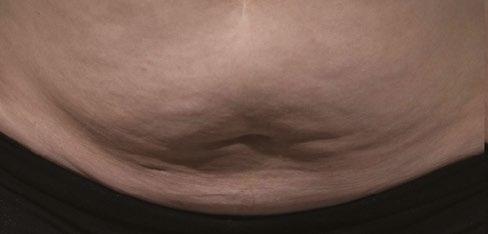
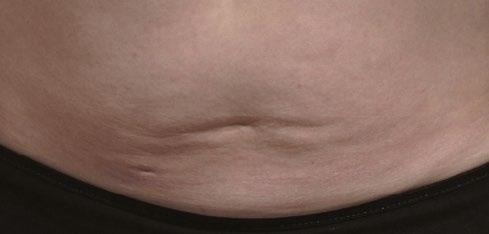
Figure 2.
Results 1 month post 3 treatments of the abdomen with a customizable radiofrequency microneedle device compared to baseline

Pre-treatment
Pre-treatment 1 Month Post 3 Treatments 1 Month Post 2 Treatments
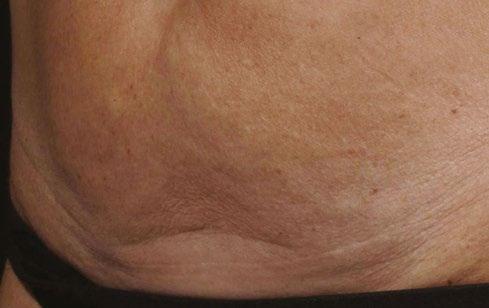
Figure 3.
Results 3 months post 2 treatments with a customizable radiofrequency microneedle device compared to baseline
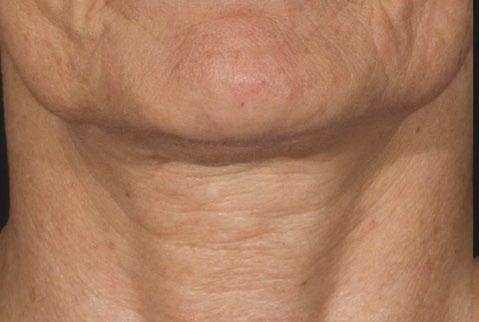
Pre-treatment
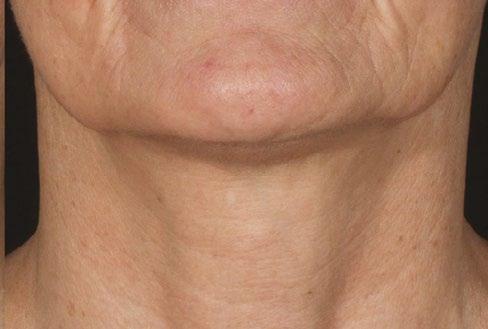
3 Months Post 2 Treatments
Figure 4.
Results 1 month post 2 treatments with a customizable radiofrequency microneedle device compared to baseline
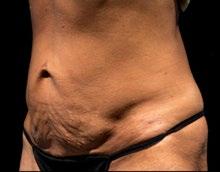
Pre-treatment

1 Months Post 2 Treatments
©2020. Cynosure, LLC. All rights reserved. Cynosure is a registered trademark of Cynosure, LLC.
The Potenza radiofrequency microneedling device is intended for electrocoagulation and hemostasis of soft tissues for dermatologic conditions. Common side effects include redness, heat sensation and tingling while receiving treatment. Other side effects may include swelling, blistering, burns, hives and lightening and darkening of the skin. Like all medical procedures, not all patients are suitable for the treatment. A qualified practitioner is solely responsible for evaluating each subject’s suitability to undergo treatment and for informing those being treated about any risks involved with the treatment, pre-and postoperative care, and any other relevant information. Individual results may vary and are not guaranteed.

Press Materials /
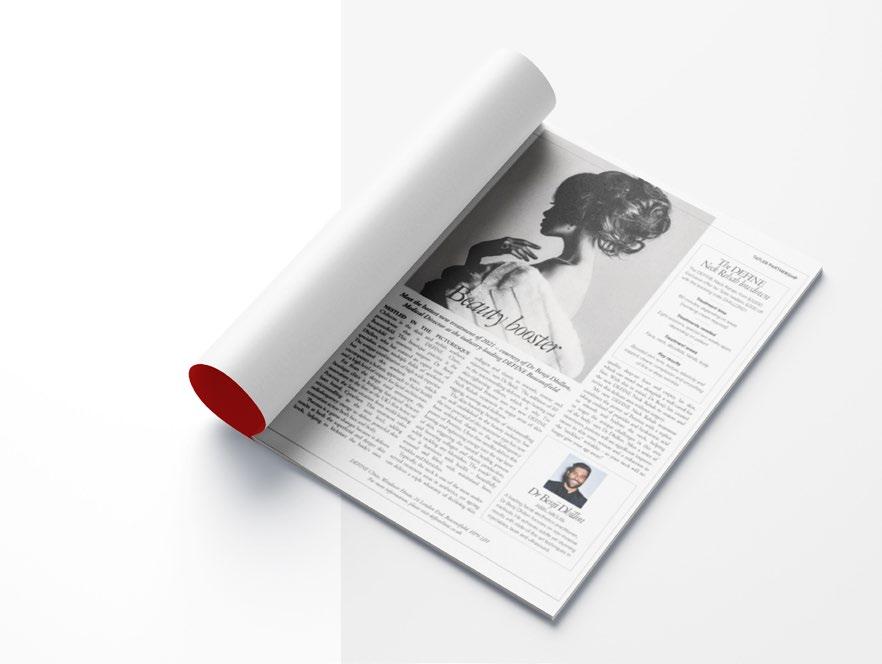
www.cynosure.com
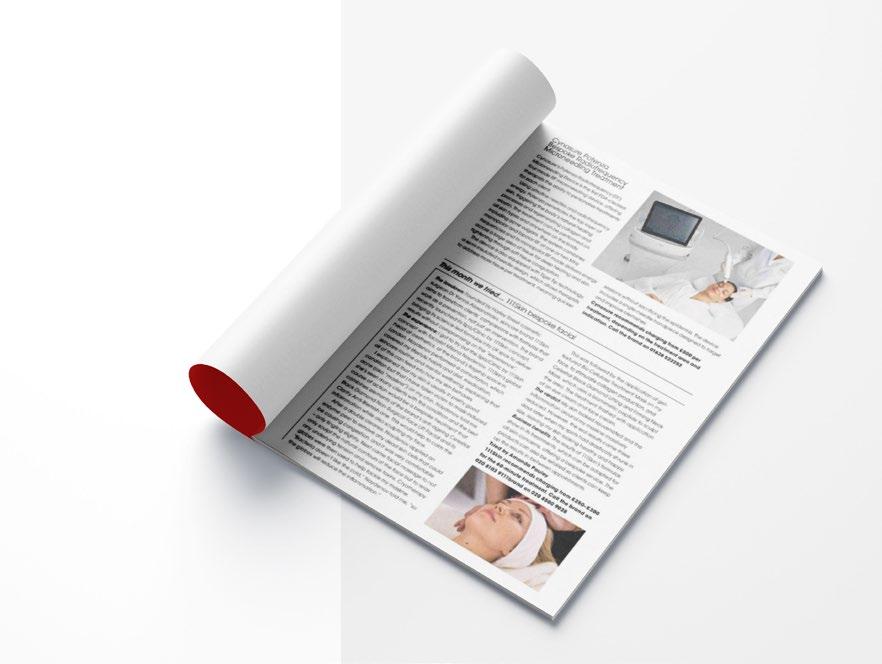
18.6K
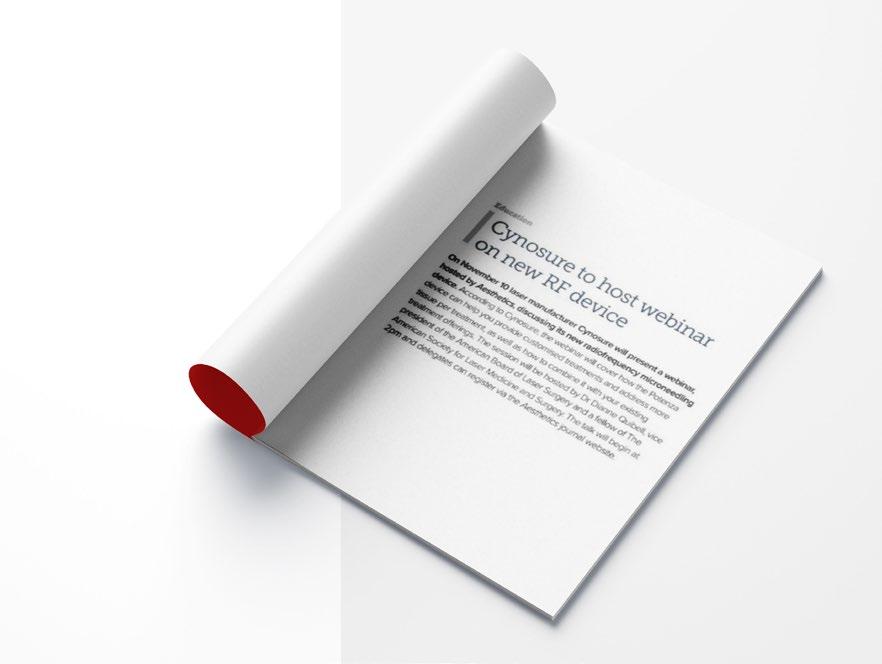
www.cynosure.com
18.6K
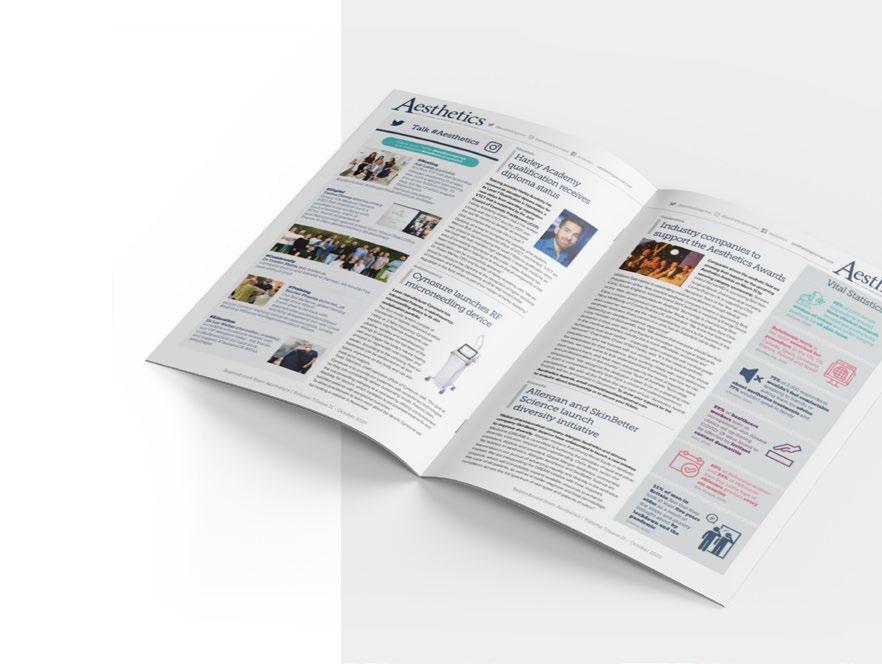
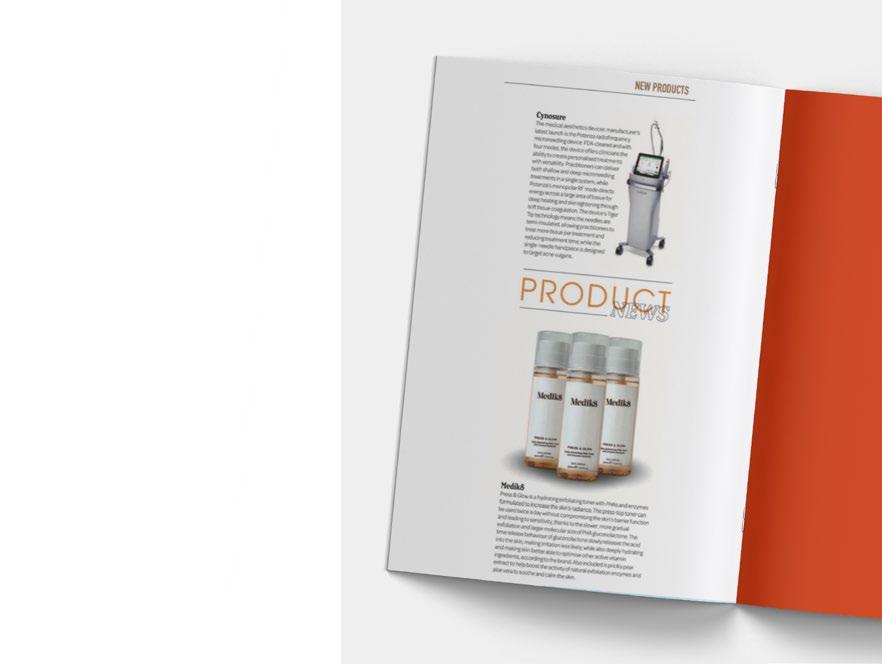
www.cynosure.com







www.cynosure.com
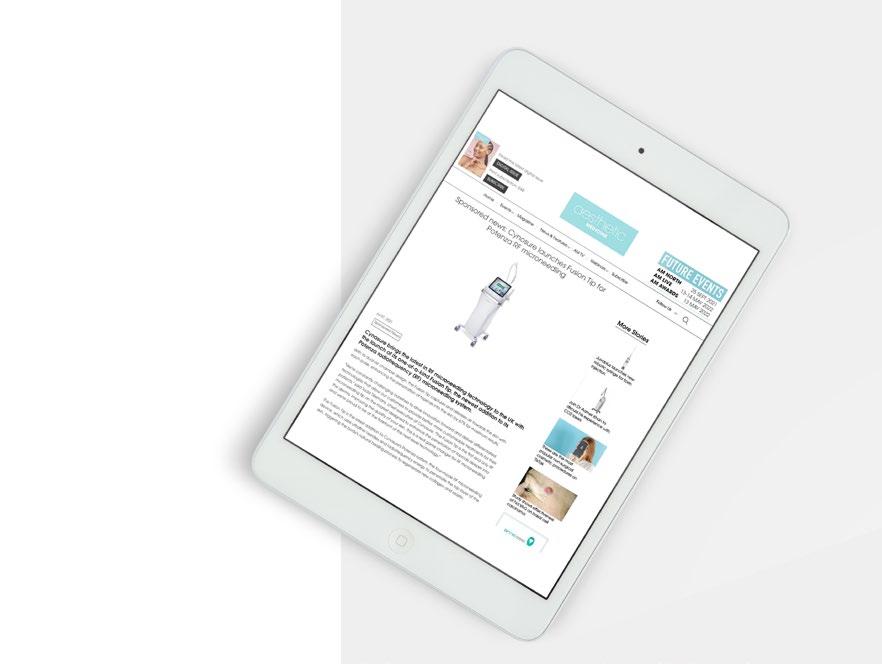










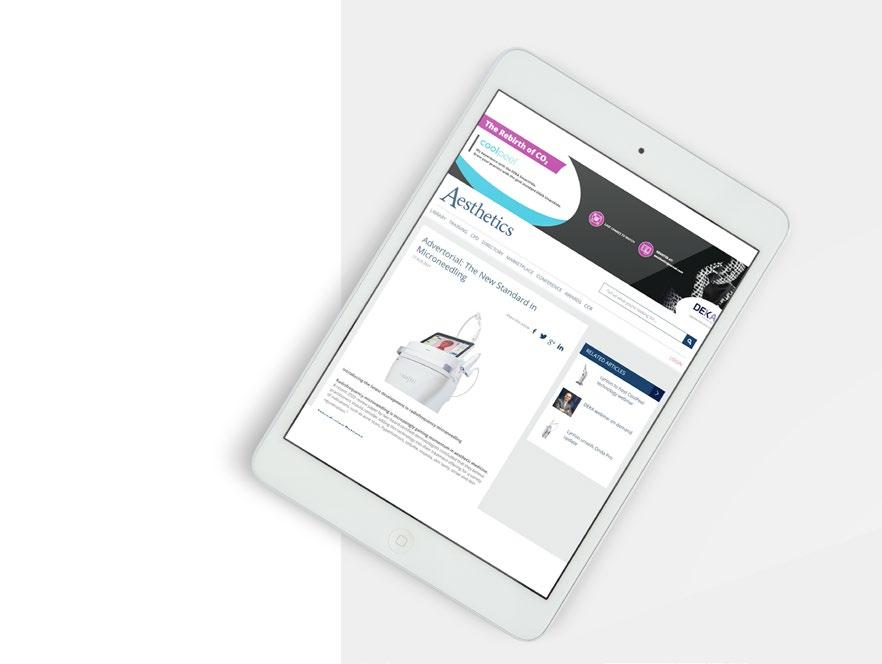



www.cynosure.com
Social/
33K
Followers
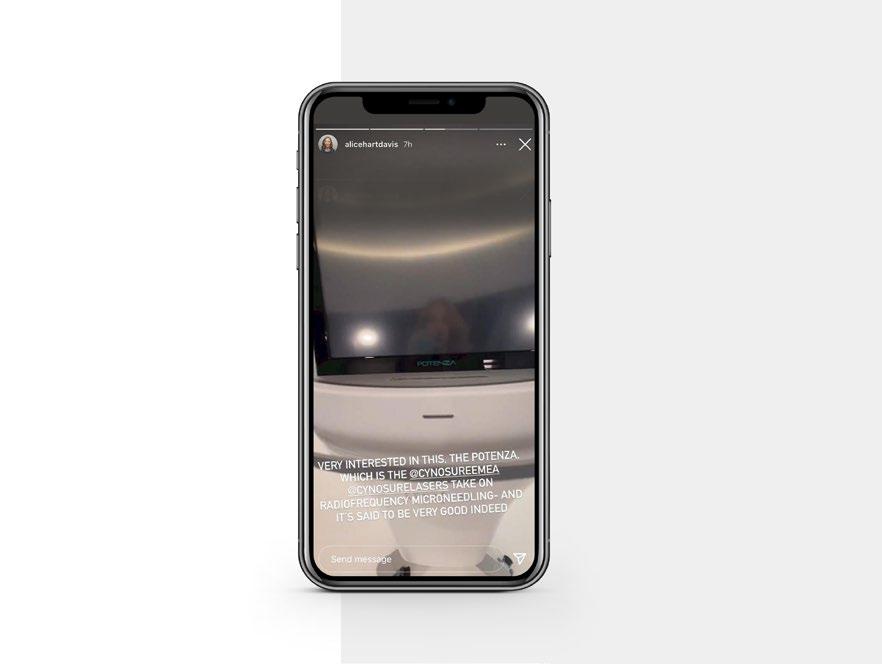
www.cynosure.com
107K
Followers
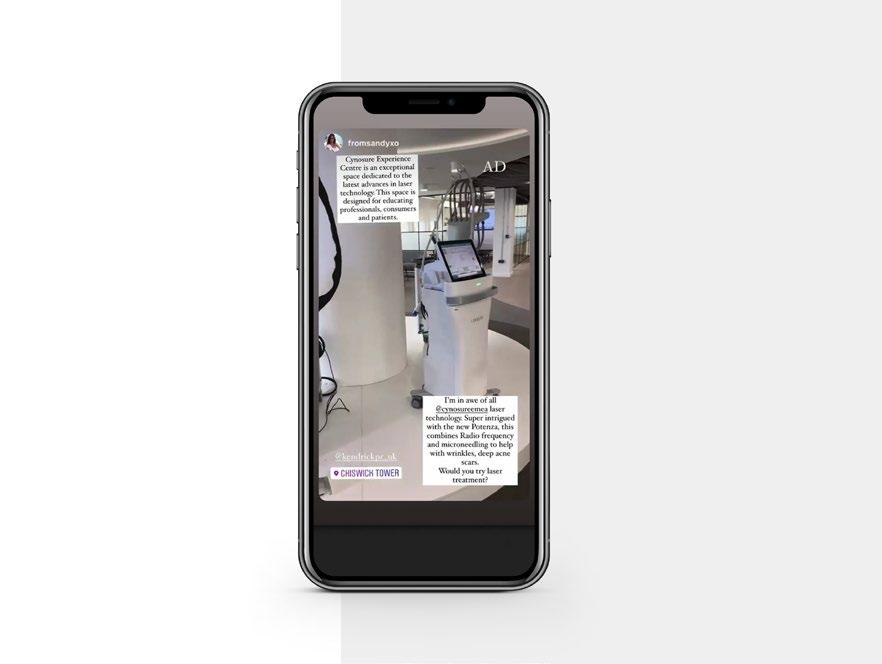
Alice Hart Davies IG
Sandy Trang IG
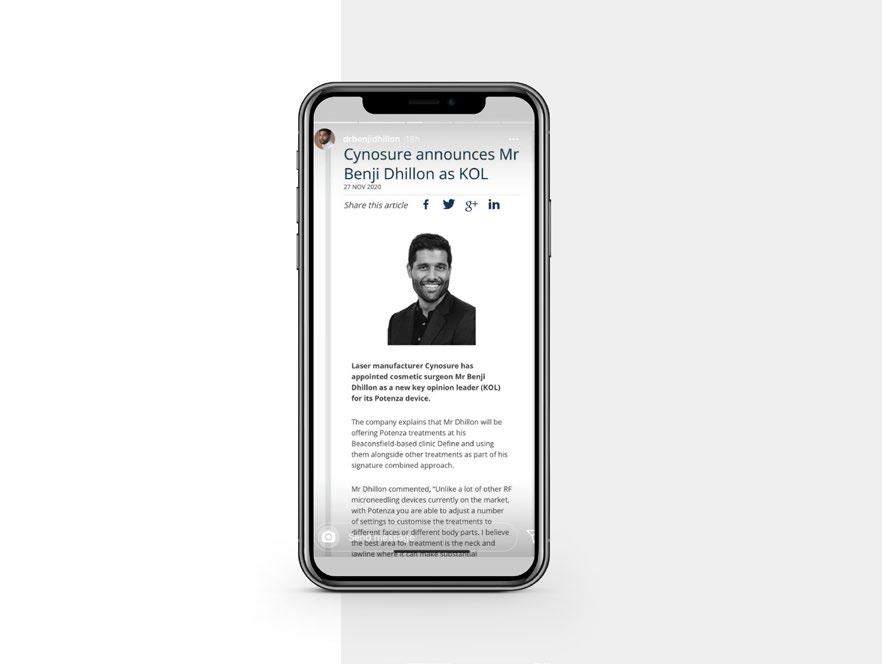
www.cynosure.com
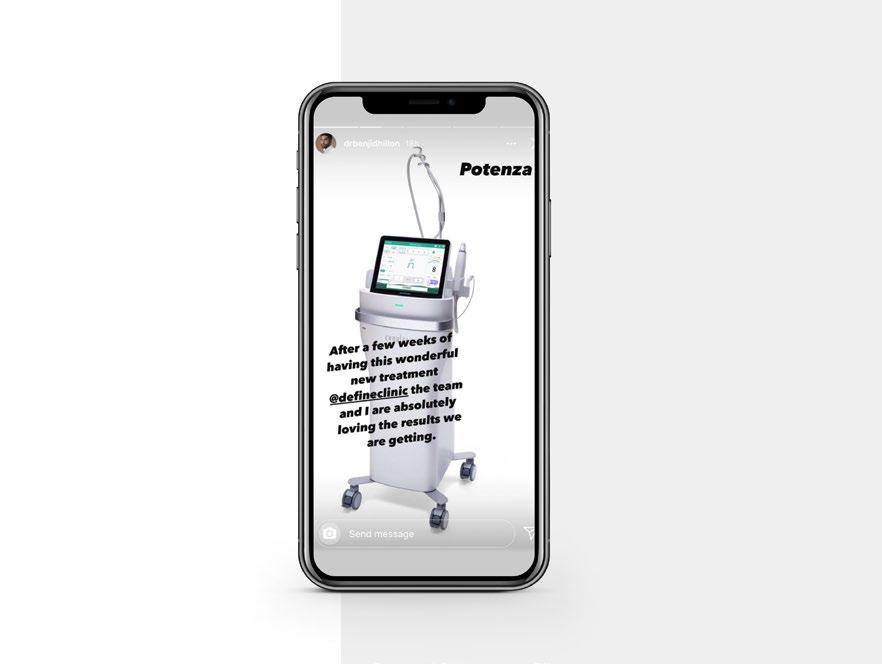

Specs & Accessories /
www.cynosureuk.com/product/potenza/
RF Type
Power
Bipolar, Monopolar
Max 50 watts
Frequency 1MHz, 2MHz
Repetition Rate 0.5-3.0 sec (0.1 sec step)
Handpieces
Tips
Fusion Tip Needles
Tiger Tip : Semi-Insulated Needles
Insulated Needles
trademark of trademark of photography. Use of Model for illustrative
lectrocoagulation effects include eceiving the treatment. A suitability to s involved with information.
Singles Needles
Needle Gauge
100-7043-001: Motorised Handpiece
100-7043-002: AC Handpiece
Motorised Handpiece
100-7043-063: CP-21
100-7043-051: S-16
100-7043-052: S-25
100-7043-053: S-49
100-7043-054: I-16
100-7043-055: I-25
100-7043-056: I-49
AC Handpiece
100-7043-060: P1-08
100-7043-061: A1-12
100-7043-062: A1-15
0.25mm
Treatment Duration 5-500ms (5ms.step)
Electrical Power
Dimensions
100-240V, 50/60Hz, 500VA
19.82 x 14.40 x 14.22 inches
(Incl. cable stand: 21.66 x 27.60 x 14.41in)
Weight Approx. 21lbs
Cart 18.82 x 18.98 x 38.08 in, 71.13lbs
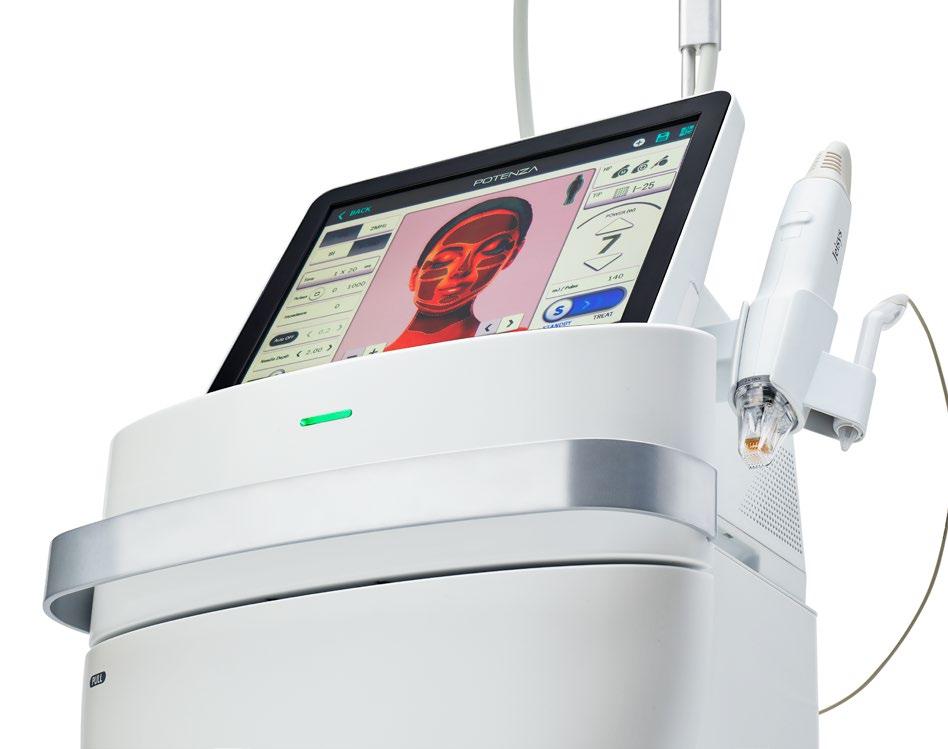
EUROPE AND EMEA:
Cynosure France
Bâtiment 6 | 132 – 134 Bd de Verdun | 92400 Courbevoie | +33 1 46 67 22 50 infofrance@cynosure.com
Cynosure Germany
Robert-Bosch-Strasse 11A | 63225 Langen | +49 6103 20 11 10 | infogermany@cynosure.com
Cynosure Morocco
Route d‘Azzemour, Rue 2, N°40 | Wakanati-Ain Diab | Casablanca | +212 522 86 58 50 infomorocco@cynosure.com
Cynosure Portugal
Avda. da Republica 67 | 1050-191 Lisboa | +351 915 064 946 | infoportugal@cynosure.com
Cynosure Spain
Avenida Quitapesares 17 | 28670 Villapark Villaviciosa de Odón (Madrid) | +34 917 888 700 infospain@cynosure.com
Cynosure UK
Chiswick Tower, 389 Chiswick High Rd | London W4 4AJ | +44 1628 522252 infouk@cynosure.com
2022. Cynosure, LLC. All rights reserved. Cynosure is a registered trademark of Cynosure, LLC. Potenza is a trademark of Jeisys Medical, Inc. Cynosure, LLC. owns exclusive rights to photography. Use of photography without written permission of Cynosure is prohibited. Model for illustrative purposes only and not an actual consumer of the product.
